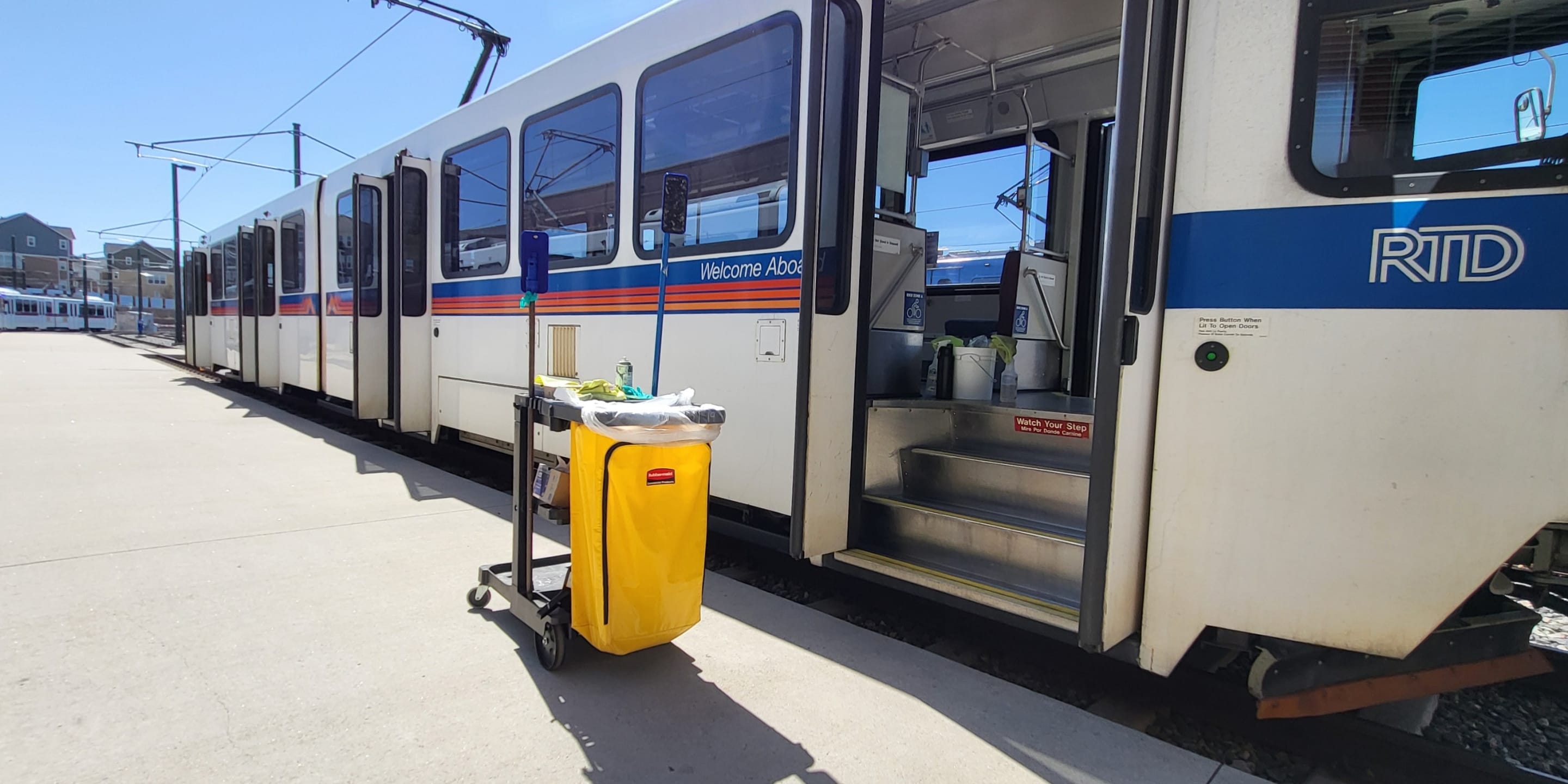
End-of-line cleaning on light rail runs is making a difference
During the busier times of the day, the end of the line is the start of service for dedicated teams of RTD service workers who stand ready to spring into action.
A light rail train that slides into the tail track at Peoria, Florida, RidgeGate Parkway or Littleton•Mineral station has 17 minutes before its next departure. This is enough time for the operator to take a short break – and for two Service and Cleaning employees to step on board each rail car.
Together, they inspect the stepwells, sweep out all trash and debris, spot mop, polish the high-touch stainless-steel handrails, disinfect hand straps and vinyl seats, and clean the windows. They also check that ADA ramps are functioning and properly locked. And they keep an eye out for phones and wallets that may have been left behind, reporting these items to Lost and Found.
Adding cleaning teams to end-of-line runs is a change made on light rail over the past couple of years as staffing nearly doubled from about 30 employees between two shifts to close to 60 over three shifts, said Service and Cleaning Supervisor Bruce Diaz. The adjustment was driven by feedback from customers, operators and other employees, who identified a need for more frequent cleaning.
“We want to really ensure that the trains are clean, that they’re safe for everybody to get on to, and the last thing they (customers) should really have to worry about is the safety or the cleanliness of the train when they get on it,” said Diaz, who joined RTD as a service worker in 2023.
Approximately 90 light rail cars are out on the alignment at any time. Each is swept, wiped down and disinfected every day. With the implementation of new cleaning procedures and the changes in staffing, rail cars now undergo a more detailed cleaning about every month, down from every 42 days. Elements of this work include removing seats, scrubbing floors and wiping down stanchions.
Customers have noticed, Diaz said, and so have operators. Generally speaking, he noted, “our operators are our first customers, because we want to be out there to make sure that in their cabs, they have all of the resources they’re going to need.” Service and Cleaning team members restock materials and ensure that operator compartments are safe, clean and disinfected as well.
When they notice a potential issue, such as a couple of dirty seats, service workers flag it immediately to be addressed, and they are asking operators to do the same, Diaz said. Customers can report cleanliness concerns to any RTD employee.
The individuals who clean the trains care deeply about serving the community and making sure others enjoy a safe ride, Diaz said. Working together, he added, “we are making a big difference.”